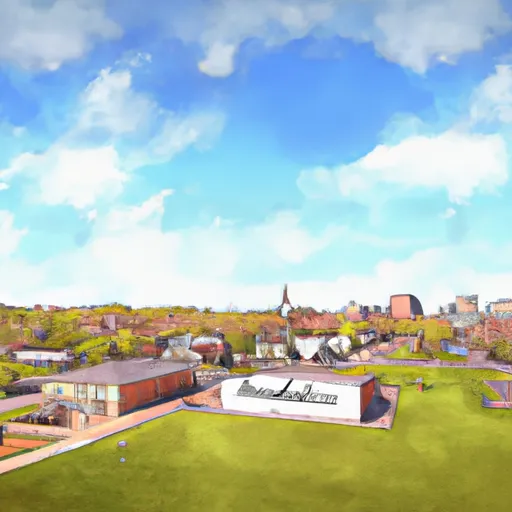-
 Snoflo Premium
Snoflo Premium
Get unlimited access to all our content
With no Ad interruptions! - Start Your Free Trial Login with existing account
Stanchfield
Eden Index
Climate
6.0
•
Recreation
2.0
•
Community
•
Safeguard
3.1/10

Stanchfield, Minnesota is a small town located in Isanti County. It experiences a continental climate, characterized by warm summers and cold winters. Average temperatures range from 15°F (-9°C) in winter to 80°F (27°C) in summer. Precipitation is evenly distributed throughout the year, with an average of 30 inches annually, including rain and snow.
The region's hydrology is primarily influenced by the Rum River, which flows through Stanchfield. The river is known for its diverse aquatic life, including various fish species, such as walleye and northern pike. It also provides opportunities for activities like fishing, canoeing, and kayaking.
Stanchfield and its surrounding area offer plenty of outdoor recreation opportunities. The town is nestled amidst beautiful forests, providing opportunities for hiking, camping, and wildlife viewing. Nearby lakes and rivers allow for boating, swimming, and water sports during the summer months. In the winter, residents and visitors can enjoy activities like ice fishing, snowmobiling, and cross-country skiing.
Overall, Stanchfield, Minnesota offers a pleasant climate, abundant hydrological resources, and diverse outdoor recreation options, making it a desirable location for nature enthusiasts and outdoor adventurers.
What is the Eden Index?
The Snoflo Eden Index serves as a comprehensive rating system for regions, evaluating their desirability through a holistic assessment of climate health, outdoor recreation opportunities, and natural disaster risk, acknowledging the profound impact of these factors on livability and well-being.
Climate Health Indicator (CHI): 6.0
Stanchfield receives approximately
754mm of rain per year,
with humidity levels near 84%
and air temperatures averaging around
6°C.
Stanchfield has a plant hardyness factor of
4, meaning
plants and agriculture in this region thrive during a short period during spring and early summer. Most
plants will die off during the colder winter months.
By considering the ideal temperature range, reliable water supplies, clean air, and stable seasonal rain or snowpacks, the Climate Health Indicator (CHI) underscores the significance of a healthy climate as the foundation for quality living.
A healthy climate is paramount for ensuring a high quality of life and livability in a region, fostering both physical well-being and environmental harmony. This can be characterized by ideal temperatures, reliable access to water supplies, clean air, and consistent seasonal rain or snowpacks.
Weather Forecast
Streamflow Conditions
Upper Mississippi-Crow-Rum
Area Rivers
Upper Mississippi-Crow-Rum
Snowpack Depths
Upper Mississippi-Crow-Rum
Reservoir Storage Capacity
Upper Mississippi-Crow-Rum
Groundwater Levels
Recreational Opportunity Index (ROI): 2.0
The Recreational Opportunity Index (ROI) recognizes the value of outdoor recreational options, such as parks, hiking trails, camping sites, and fishing spots, while acknowledging that climate plays a pivotal role in ensuring the comfort and consistency of these experiences.
Access to outdoor recreational opportunities, encompassing activities such as parks, hiking, camping, and fishing, is crucial for overall well-being, and the climate plays a pivotal role in enabling and enhancing these experiences, ensuring that individuals can engage in nature-based activities comfortably and consistently.
Camping Areas
| Campground | Campsites | Reservations | Toilets | Showers | Elevation |
|---|---|---|---|---|---|
| McCarthy Beach State Park | 90 | 1,393 ft | |||
| Isanti County Fairgrounds | None | 956 ft | |||
| American Legion Park - Warba | None | 1,294 ft | |||
| Button Box ? George Washington State Forest | 12 | 1,400 ft | |||
| Ashton Wildwood Park | None | 942 ft | |||
| Woodenfrog - Kabetogama State Forest | 60 | 1,126 ft | |||
| Grammer Grove Wildlife Area | None | 930 ft | |||
| Bass Lake | None | 1,445 ft | |||
| Timmons Grove County Park | 18 | 889 ft | |||
| Snake River City Campground | 12 | 1,257 ft |
Nearby Ski Areas
Catastrophe Safeguard Index (CSI):
The Catastrophe Safeguard Index (CSI) recognizes that natural disaster risk, encompassing floods, fires, hurricanes, and tornadoes, can drastically affect safety and the overall appeal of an area.
The level of natural disaster risk in a region significantly affects safety and the overall livability, with climate change amplifying these risks by potentially increasing the frequency and intensity of events like floods, fires, hurricanes, and tornadoes, thereby posing substantial challenges to community resilience and well-being.
Community Resilience Indicator (CRI):
The Community Resilience Indicator (CRI) recognizes that education, healthcare, and socioeconomics are crucial to the well-being of a region. The CRI acknowledges the profound impact of these elements on residents' overall quality of life. By evaluating educational resources, healthcare accessibility, and economic inclusivity, the index captures the essential aspects that contribute to a thriving community, fostering resident satisfaction, equity, and social cohesion.

